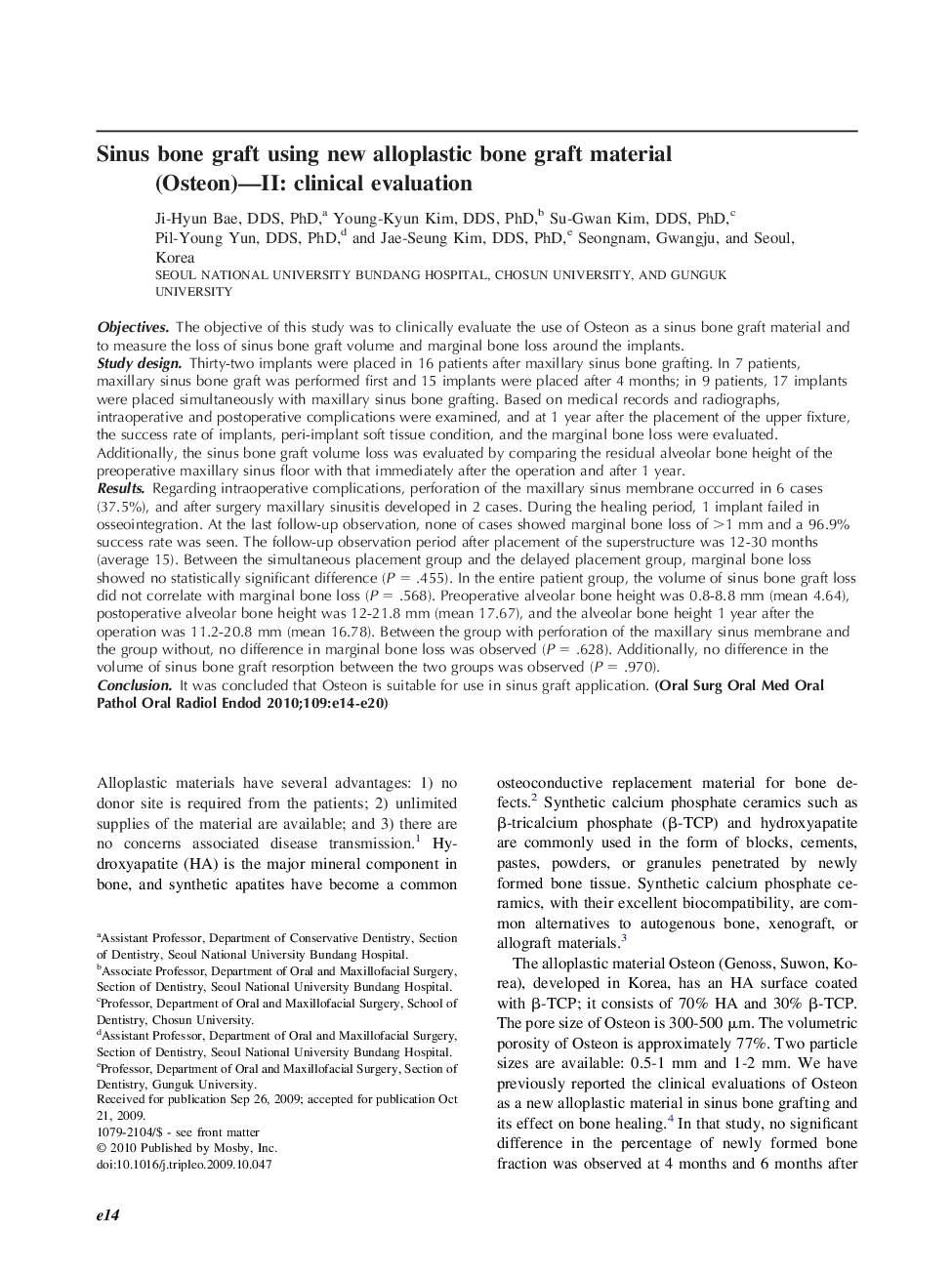| Article ID | Journal | Published Year | Pages | File Type |
|---|---|---|---|---|
| 3167677 | Oral Surgery, Oral Medicine, Oral Pathology, Oral Radiology, and Endodontology | 2010 | 7 Pages |
ObjectivesThe objective of this study was to clinically evaluate the use of Osteon as a sinus bone graft material and to measure the loss of sinus bone graft volume and marginal bone loss around the implants.Study designThirty-two implants were placed in 16 patients after maxillary sinus bone grafting. In 7 patients, maxillary sinus bone graft was performed first and 15 implants were placed after 4 months; in 9 patients, 17 implants were placed simultaneously with maxillary sinus bone grafting. Based on medical records and radiographs, intraoperative and postoperative complications were examined, and at 1 year after the placement of the upper fixture, the success rate of implants, peri-implant soft tissue condition, and the marginal bone loss were evaluated. Additionally, the sinus bone graft volume loss was evaluated by comparing the residual alveolar bone height of the preoperative maxillary sinus floor with that immediately after the operation and after 1 year.ResultsRegarding intraoperative complications, perforation of the maxillary sinus membrane occurred in 6 cases (37.5%), and after surgery maxillary sinusitis developed in 2 cases. During the healing period, 1 implant failed in osseointegration. At the last follow-up observation, none of cases showed marginal bone loss of >1 mm and a 96.9% success rate was seen. The follow-up observation period after placement of the superstructure was 12-30 months (average 15). Between the simultaneous placement group and the delayed placement group, marginal bone loss showed no statistically significant difference (P = .455). In the entire patient group, the volume of sinus bone graft loss did not correlate with marginal bone loss (P = .568). Preoperative alveolar bone height was 0.8-8.8 mm (mean 4.64), postoperative alveolar bone height was 12-21.8 mm (mean 17.67), and the alveolar bone height 1 year after the operation was 11.2-20.8 mm (mean 16.78). Between the group with perforation of the maxillary sinus membrane and the group without, no difference in marginal bone loss was observed (P = .628). Additionally, no difference in the volume of sinus bone graft resorption between the two groups was observed (P = .970).ConclusionIt was concluded that Osteon is suitable for use in sinus graft application.
